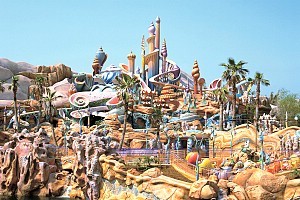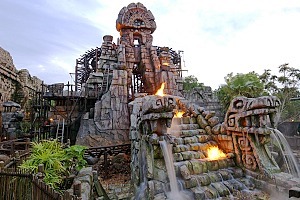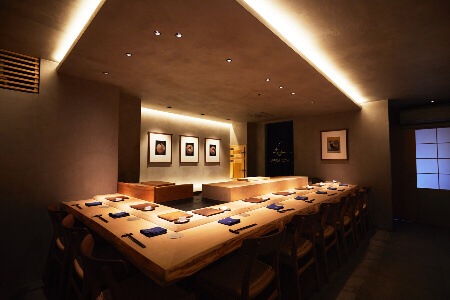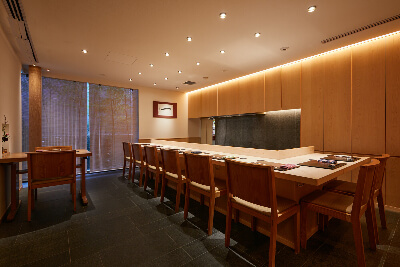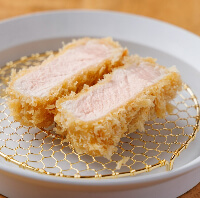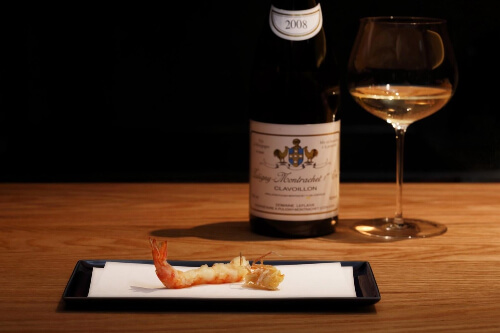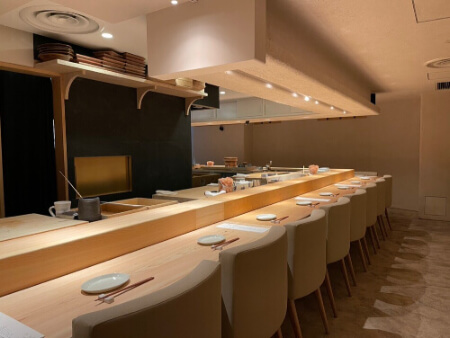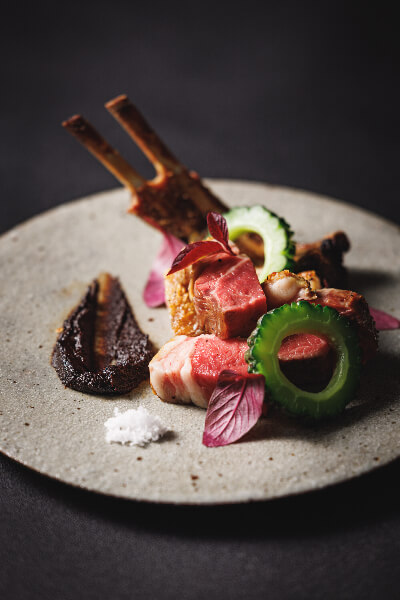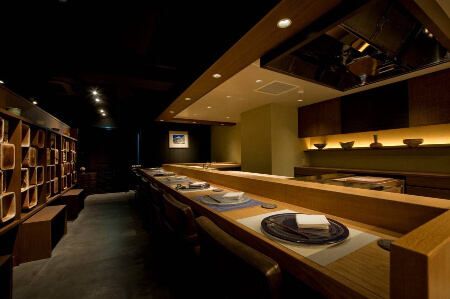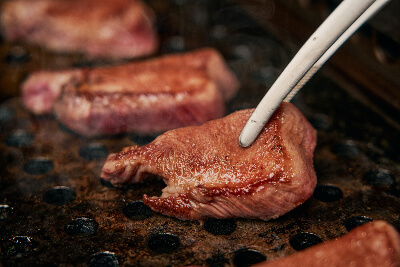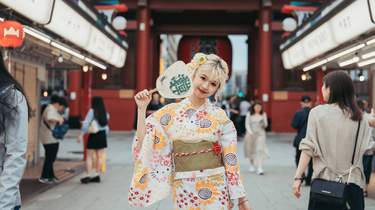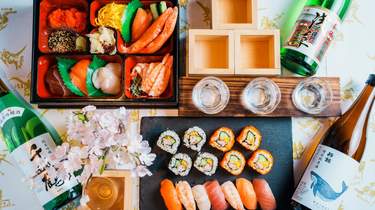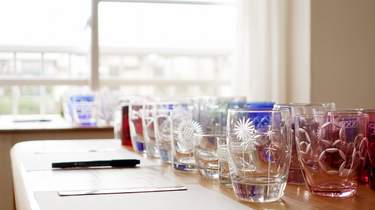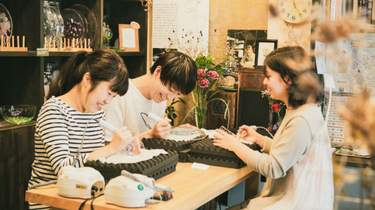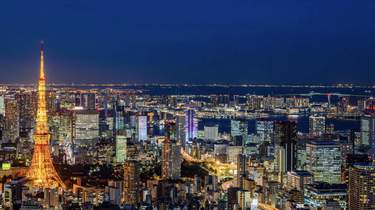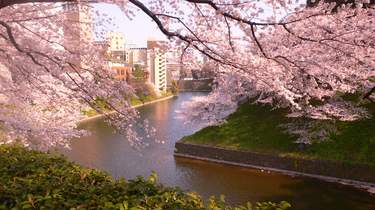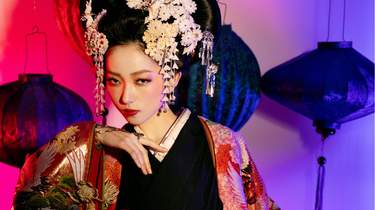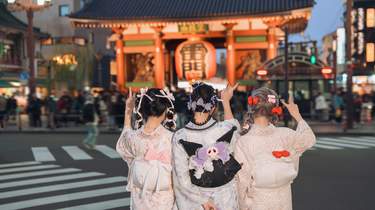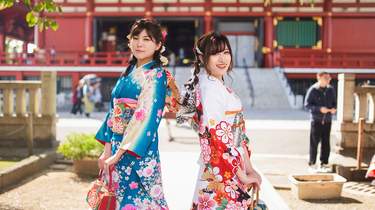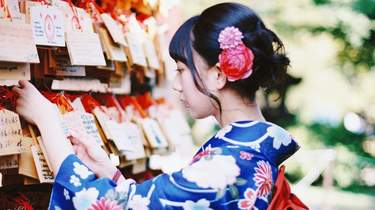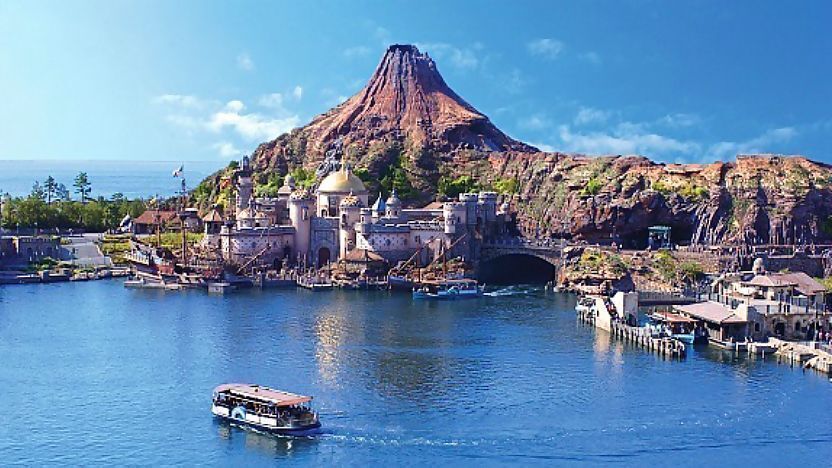
Tokyo DisneySea is a fantasy theme park in Tokyo Disney Resort that is unique to Japan. Inspired by the myths and legends of the sea, Tokyo DisneySea is made up of eight themed ports of call: Mediterranean Harbor, Mysterious Island, Mermaid Lagoon, Arabian Coast, Lost River Delta, Port Discovery, American Waterfront and Fantasy Springs.
While suitable for all ages, Tokyo DisneySea was designed to specifically also appeal to a more grown up audience. The park addresses the Japanese visitors' strong interest in good food by providing a wider selection of table service restaurants than Tokyo Disneyland.
Themed ports
Getting there and around
From Maihama Station, take the Disney Resort Monorail to Tokyo Disney Sea Station (10 minutes, 260 yen). Alternatively, you can walk there in about 20 minutes.
How to get to and around Tokyo Disney Resort
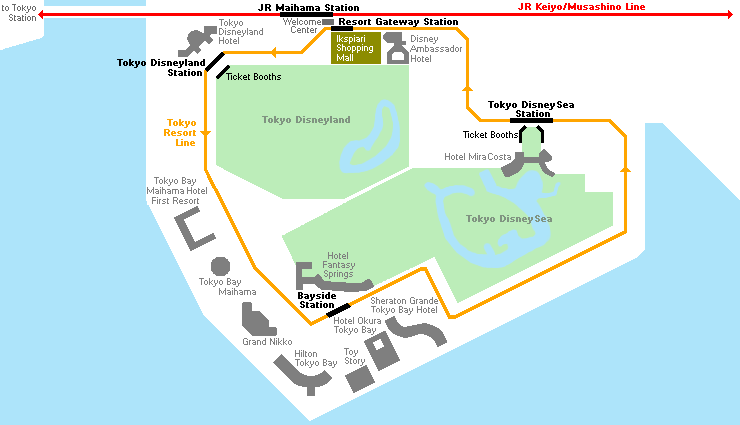
Hours and Fees
Hours
Closed
Admission
Questions? Ask in our forum.
Links and Resources
Hotels around Tokyo
-
-
![]() Grand Nikko Tokyo Bay MaihamaGrand Nikko Tokyo Bay Maihama is the official hotel of Tokyo Disney Resort, located on the eastern side of Tokyo Bay, just 20 minutes by train from Tokyo Station. It features all-day dining, outdoor parking, a Disney shop, luggage storage space, free Wi-Fi throughout the property and a currency exchange machine. All rooms at Grand Nikko Tokyo Bay Maihama are equipped with a balcony, seating area, LCD TV, bathroom, air conditioning and wardrobe. You can enjoy the view of Disney Resort or Tokyo Bay from the balcony of your room. The all-day dining "Le Jardin" has 473 seats, which is the largest in the area, and has an ocean view area overlooking Tokyo Bay, a calm lounge, a bar counter, and other spaces suitable for various purposes. We offer buffet and ? la carte menus in a cozy atmosphere. The hotel is a 10-minute drive from JR Maihama Station and operates a free shuttle. Bayside Station on the monorail is a 4-minute walk away, providing direct access to Tokyo DisneySea and Tokyo Disneyland. Limousine buses from Narita International Airport and Haneda Airport stop at the hotel.View on Booking.com
Grand Nikko Tokyo Bay MaihamaGrand Nikko Tokyo Bay Maihama is the official hotel of Tokyo Disney Resort, located on the eastern side of Tokyo Bay, just 20 minutes by train from Tokyo Station. It features all-day dining, outdoor parking, a Disney shop, luggage storage space, free Wi-Fi throughout the property and a currency exchange machine. All rooms at Grand Nikko Tokyo Bay Maihama are equipped with a balcony, seating area, LCD TV, bathroom, air conditioning and wardrobe. You can enjoy the view of Disney Resort or Tokyo Bay from the balcony of your room. The all-day dining "Le Jardin" has 473 seats, which is the largest in the area, and has an ocean view area overlooking Tokyo Bay, a calm lounge, a bar counter, and other spaces suitable for various purposes. We offer buffet and ? la carte menus in a cozy atmosphere. The hotel is a 10-minute drive from JR Maihama Station and operates a free shuttle. Bayside Station on the monorail is a 4-minute walk away, providing direct access to Tokyo DisneySea and Tokyo Disneyland. Limousine buses from Narita International Airport and Haneda Airport stop at the hotel.View on Booking.com -
![]() Urayasu Brighton Hotel Tokyo BayLocated a 1-minute walk away from JR Shinurayasu Station, Urayasu Brighton Hotel Tokyo Bay offers free WiFi access in all rooms and private parking. The resort features a sauna, an indoor pool available for adults only, a bar and a variety of restaurants, ranging from Chinese to French, Italian and Japanese cuisines. Tokyo Disney Resort can be accessed by a free 15-minute shuttle-bus ride from the hotel. The property is 40-minutes by bus from Haneda International Airport, and 60-minutes by bus from Narita International Airport. Maihama Station is a 4-minute train ride away, and JR Tokyo Station is about 17-minutes by rapid-service train. Tokyo Bay Brighton Hotel features private parking space, a 24-hour front desk, a hair salon and several other stores on-site. All rooms are air-conditioned with a flat-screen TV and comes with a sofa. The en suite bathrooms feature a private bath, shower and free toiletries. A breakfast buffet is served at the Cache-cache restaurant on-site, between 07:00 to 10:00, 7 days a week. There are several other restaurants on-site, where guests can try teppanyaki, traditional Kyoto style cuisine, Chinese food and more.View on Booking.com
Urayasu Brighton Hotel Tokyo BayLocated a 1-minute walk away from JR Shinurayasu Station, Urayasu Brighton Hotel Tokyo Bay offers free WiFi access in all rooms and private parking. The resort features a sauna, an indoor pool available for adults only, a bar and a variety of restaurants, ranging from Chinese to French, Italian and Japanese cuisines. Tokyo Disney Resort can be accessed by a free 15-minute shuttle-bus ride from the hotel. The property is 40-minutes by bus from Haneda International Airport, and 60-minutes by bus from Narita International Airport. Maihama Station is a 4-minute train ride away, and JR Tokyo Station is about 17-minutes by rapid-service train. Tokyo Bay Brighton Hotel features private parking space, a 24-hour front desk, a hair salon and several other stores on-site. All rooms are air-conditioned with a flat-screen TV and comes with a sofa. The en suite bathrooms feature a private bath, shower and free toiletries. A breakfast buffet is served at the Cache-cache restaurant on-site, between 07:00 to 10:00, 7 days a week. There are several other restaurants on-site, where guests can try teppanyaki, traditional Kyoto style cuisine, Chinese food and more.View on Booking.com -
![]() Hyatt Regency Tokyo BayLocated in Urayasu, 4 km from Urayasu Local Museum, Hyatt Regency Tokyo Bay provides accommodation with a garden, private parking, a restaurant and a bar. The property is around 4.9 km from Former House of Udagawa Family, 5 km from Former House of Otsuka Family and 5.9 km from Tokyo Disneyland. The accommodation offers a 24-hour front desk, airport transfers, room service and free WiFi throughout the property. Guest rooms at the hotel come with air conditioning, a seating area, a flat-screen TV with cable channels, a safety deposit box and a private bathroom with a bidet, free toiletries and a hairdryer. All guest rooms will provide guests with a fridge. A buffet breakfast is available at Hyatt Regency Tokyo Bay. Tokyo Disney Resort is 5.9 km from the accommodation, while Subway Museum is 6.7 km away. Narita International Airport is 56 km from the property.View on Booking.com
Hyatt Regency Tokyo BayLocated in Urayasu, 4 km from Urayasu Local Museum, Hyatt Regency Tokyo Bay provides accommodation with a garden, private parking, a restaurant and a bar. The property is around 4.9 km from Former House of Udagawa Family, 5 km from Former House of Otsuka Family and 5.9 km from Tokyo Disneyland. The accommodation offers a 24-hour front desk, airport transfers, room service and free WiFi throughout the property. Guest rooms at the hotel come with air conditioning, a seating area, a flat-screen TV with cable channels, a safety deposit box and a private bathroom with a bidet, free toiletries and a hairdryer. All guest rooms will provide guests with a fridge. A buffet breakfast is available at Hyatt Regency Tokyo Bay. Tokyo Disney Resort is 5.9 km from the accommodation, while Subway Museum is 6.7 km away. Narita International Airport is 56 km from the property.View on Booking.com -
![]() Hiyori Hotel MaihamaOpened in July 2017, Hiyori Hotel Maihama is located a 8-minute drive from Tokyo Disneyland and Tokyo DisneySea. Free shuttle bus service is available between the Hotel and JR Maihama Station every day. Free WiFi is provided in all rooms. All rooms feature air conditioning, a flat-screen TV, a wardrobe, a desk, an electric kettle and a refrigerator. Some rooms feature a tatami (woven-straw) floor. The private bathrooms come equipped with a hairdryer, towels, slippers and free toiletries. A 24-hour front desk is available and there is a drinks vending machine on site. Fruit-infused water and an ice maker are provided. For guests' comfort, 2 extra amenities per person are offered and guests can borrow a pillow with height and filling of their choice. Laundry services are available for an additional fee. The on-site restaurant offers a breakfast buffet at an additional cost. There are several restaurants and convenience stores within a 5-minute drive from Hiyori Hotel Maihama. Tokyo Gate Bridge is a 25-minute drive from the property. The nearest airport is Tokyo Haneda International Airport, 20 minutes by car from Hiyori Hotel Maihama.View on Booking.com
Hiyori Hotel MaihamaOpened in July 2017, Hiyori Hotel Maihama is located a 8-minute drive from Tokyo Disneyland and Tokyo DisneySea. Free shuttle bus service is available between the Hotel and JR Maihama Station every day. Free WiFi is provided in all rooms. All rooms feature air conditioning, a flat-screen TV, a wardrobe, a desk, an electric kettle and a refrigerator. Some rooms feature a tatami (woven-straw) floor. The private bathrooms come equipped with a hairdryer, towels, slippers and free toiletries. A 24-hour front desk is available and there is a drinks vending machine on site. Fruit-infused water and an ice maker are provided. For guests' comfort, 2 extra amenities per person are offered and guests can borrow a pillow with height and filling of their choice. Laundry services are available for an additional fee. The on-site restaurant offers a breakfast buffet at an additional cost. There are several restaurants and convenience stores within a 5-minute drive from Hiyori Hotel Maihama. Tokyo Gate Bridge is a 25-minute drive from the property. The nearest airport is Tokyo Haneda International Airport, 20 minutes by car from Hiyori Hotel Maihama.View on Booking.com -
![]() Comfort Suites Tokyo BayComfort Suites Tokyo Bay is situated in Tokyo, 4.1 km from Tokyo DisneySea and has a fitness centre. With free WiFi, this 4-star hotel offers free shuttle service between the hotel and Tokyo Disney Resort and a 24-hour front desk. The accommodation provides luggage storage space and a kids' club for guests. At the hotel, the rooms have a desk, a flat-screen TV and a private bathroom. All units will provide guests with a microwave. A charged breakfast is available. If you booked reservation(s) for a plan including breakfast through the website, up to 12 years old kids with you will be admitted free of charge. Tokyo Disneyland is 4.3 km from Comfort Suites Tokyo Bay, while Tokyo Gate Bridge is 10 km from the property. The nearest airport is Tokyo Haneda International Airport, 17 km from the property.View on Booking.com
Comfort Suites Tokyo BayComfort Suites Tokyo Bay is situated in Tokyo, 4.1 km from Tokyo DisneySea and has a fitness centre. With free WiFi, this 4-star hotel offers free shuttle service between the hotel and Tokyo Disney Resort and a 24-hour front desk. The accommodation provides luggage storage space and a kids' club for guests. At the hotel, the rooms have a desk, a flat-screen TV and a private bathroom. All units will provide guests with a microwave. A charged breakfast is available. If you booked reservation(s) for a plan including breakfast through the website, up to 12 years old kids with you will be admitted free of charge. Tokyo Disneyland is 4.3 km from Comfort Suites Tokyo Bay, while Tokyo Gate Bridge is 10 km from the property. The nearest airport is Tokyo Haneda International Airport, 17 km from the property.View on Booking.com -
![]() Hotel Okura Tokyo BayLocated right in front of Bayside Station on the Disney Resort Line, Hotel Okura Tokyo Bay boasts 4 restaurants and a bar. Free WiFi is provided throughout the property and private parking is available on site. The property offers free shuttle service from JR Maihama Station on weekends and holidays. All rooms at Tokyo Bay Hotel Okura feature air conditioning, a flat-screen TV, seating area, fridge and electric kettle. The spacious bathroom with marble walls comes with a separate shower booth and bath tub. Free toiletries, towels and a hairdryer are provided. There is a 24-hour front desk, shops and banquet facilities at the property. Services include luggage storage, currency exchange, dry cleaning, ironing and a massage service. Guests will find French, Japanese, Chinese and Western cafe restaurants at Hotel Okura Tokyo Bay. A buffet is available for breakfast. There is also a shop that sells breads, cakes and snacks as well as alcoholic and soft drinks at the property. Bayside Station on the Disney Resort Line is a 3-minute walk from Hotel Okura Tokyo Bay. Guests can reach Tokyo Disneyland in 10 minutes and Tokyo DisneySea in 5 minutes from Bayside Station using the Disney Resort Line monorail. Limousine buses are available from Haneda Airport and Narita Airport to the property. Haneda Airport is a 50-minute bus ride from Hotel Okura Tokyo Bay, while Narita Airport is a 70-minute bus ride away . The property has strengthened their measures against Covid-19 receiving GBAC STAR Facility Accreditation on the 1st June 2021. This will further provide safety for guests against Covid-19.View on Booking.com
Hotel Okura Tokyo BayLocated right in front of Bayside Station on the Disney Resort Line, Hotel Okura Tokyo Bay boasts 4 restaurants and a bar. Free WiFi is provided throughout the property and private parking is available on site. The property offers free shuttle service from JR Maihama Station on weekends and holidays. All rooms at Tokyo Bay Hotel Okura feature air conditioning, a flat-screen TV, seating area, fridge and electric kettle. The spacious bathroom with marble walls comes with a separate shower booth and bath tub. Free toiletries, towels and a hairdryer are provided. There is a 24-hour front desk, shops and banquet facilities at the property. Services include luggage storage, currency exchange, dry cleaning, ironing and a massage service. Guests will find French, Japanese, Chinese and Western cafe restaurants at Hotel Okura Tokyo Bay. A buffet is available for breakfast. There is also a shop that sells breads, cakes and snacks as well as alcoholic and soft drinks at the property. Bayside Station on the Disney Resort Line is a 3-minute walk from Hotel Okura Tokyo Bay. Guests can reach Tokyo Disneyland in 10 minutes and Tokyo DisneySea in 5 minutes from Bayside Station using the Disney Resort Line monorail. Limousine buses are available from Haneda Airport and Narita Airport to the property. Haneda Airport is a 50-minute bus ride from Hotel Okura Tokyo Bay, while Narita Airport is a 70-minute bus ride away . The property has strengthened their measures against Covid-19 receiving GBAC STAR Facility Accreditation on the 1st June 2021. This will further provide safety for guests against Covid-19.View on Booking.com -
![]() Hilton Tokyo BaySituated on the eastern shore of Tokyo Bay and located just a 20-minute train ride from Tokyo Station, Hilton Tokyo Bay Hotel is the official hotel of Tokyo Disney Resort. Offering spacious rooms with ocean or Disney Resort views, it features 5 restaurants and indoor and outdoor pools. Elegantly decorated, the rooms at Tokyo Bay Hilton come with personalised service. Each has a flat-screen TV with a DVD player, and the roomy seating area invite relaxation. Bayside Monorail Station on the Disney Resort Line is just a 6-minute walk or 1-minute shuttle ride away, and goes directly to Tokyo Disneyland and Tokyo Disney Sea. The Narita Airport Limousine Bus stops at the hotel. Guests can refresh with a massage at Relaxation Salon or recharge with a work-out in the fitness room. A business center and a laundromat are also provided. Forest garden is a buffet restaurant filled with excitement, fun, and deliciousness where anyone can easily gather. In a relaxing space that makes you feel as if you are in the middle of a forest, the chef will offer a variety of original dishes using seasonal ingredients that will leave you with pleasant memories. Authentic Chinese flavors are served at Dynasty Restaurant. Grill & Italian accendo offers an exquisite selection of grilled steaks and ASC and MSC certificated sustainable seafood while bringing out the natural flavors out of the fresh vegetables. Those looking for a cocktail should head to silva Bar. The gym area is complimentary for registered guests and available 24 hours. Please note that the indoor pool is a chargeable facility. 2025 our annual garden pool season is open from July 1st to October 5th. Following the season opening, reservations are required and pool access fees will apply. We also welcome non-staying guests to experience this unique retreat through our exclusive visitor day plan. Please contact the hotel directly for details.View on Booking.com
Hilton Tokyo BaySituated on the eastern shore of Tokyo Bay and located just a 20-minute train ride from Tokyo Station, Hilton Tokyo Bay Hotel is the official hotel of Tokyo Disney Resort. Offering spacious rooms with ocean or Disney Resort views, it features 5 restaurants and indoor and outdoor pools. Elegantly decorated, the rooms at Tokyo Bay Hilton come with personalised service. Each has a flat-screen TV with a DVD player, and the roomy seating area invite relaxation. Bayside Monorail Station on the Disney Resort Line is just a 6-minute walk or 1-minute shuttle ride away, and goes directly to Tokyo Disneyland and Tokyo Disney Sea. The Narita Airport Limousine Bus stops at the hotel. Guests can refresh with a massage at Relaxation Salon or recharge with a work-out in the fitness room. A business center and a laundromat are also provided. Forest garden is a buffet restaurant filled with excitement, fun, and deliciousness where anyone can easily gather. In a relaxing space that makes you feel as if you are in the middle of a forest, the chef will offer a variety of original dishes using seasonal ingredients that will leave you with pleasant memories. Authentic Chinese flavors are served at Dynasty Restaurant. Grill & Italian accendo offers an exquisite selection of grilled steaks and ASC and MSC certificated sustainable seafood while bringing out the natural flavors out of the fresh vegetables. Those looking for a cocktail should head to silva Bar. The gym area is complimentary for registered guests and available 24 hours. Please note that the indoor pool is a chargeable facility. 2025 our annual garden pool season is open from July 1st to October 5th. Following the season opening, reservations are required and pool access fees will apply. We also welcome non-staying guests to experience this unique retreat through our exclusive visitor day plan. Please contact the hotel directly for details.View on Booking.com -
![]() Hotel Emion Tokyo BayA 7-minute walk from the JR Shin-Urayasu Train Station, Hotel Emion Tokyo Bay offers a hot-spring bath and Western accommodation with free wired internet. The hotel provides free shuttle service to Tokyo Disney Resort, about a 15-minute ride away. The air-conditioned rooms come with a flat-screen TV, a fridge and a kettle. Slippers and a hairdryer are equipped in each bathroom. Guests can relax with a massage, or soak at the public bath with an extra fee. DVD players and a trouser press can be requested for free. Guests can choose between Lala Italiana restaurant's Italian cuisine and the Japanese dishes served at Kai restaurant. A daily breakfast buffet is available at the dining area. Tokyo Train Station is 20 km from Emion Tokyo Bay Hotel. From nearby Shin-Urayasu Train Station, Tokyo Big Sight convention centre is about a 30-minute trip.View on Booking.com
Hotel Emion Tokyo BayA 7-minute walk from the JR Shin-Urayasu Train Station, Hotel Emion Tokyo Bay offers a hot-spring bath and Western accommodation with free wired internet. The hotel provides free shuttle service to Tokyo Disney Resort, about a 15-minute ride away. The air-conditioned rooms come with a flat-screen TV, a fridge and a kettle. Slippers and a hairdryer are equipped in each bathroom. Guests can relax with a massage, or soak at the public bath with an extra fee. DVD players and a trouser press can be requested for free. Guests can choose between Lala Italiana restaurant's Italian cuisine and the Japanese dishes served at Kai restaurant. A daily breakfast buffet is available at the dining area. Tokyo Train Station is 20 km from Emion Tokyo Bay Hotel. From nearby Shin-Urayasu Train Station, Tokyo Big Sight convention centre is about a 30-minute trip.View on Booking.com -
![]() Oriental Hotel Tokyo BayOffering free 15-minute shuttle rides to/from Tokyo Disney Resort, this official Disney partner hotel is located right in front of JR Shin-Urayasu Station. Guests can savour various cuisines at one of the 3 on-site restaurants and bars. Public parking is available on site at an additional charge. Featuring warm natural colours, rooms at Oriental Hotel Tokyo Bay are fitted with a foot massager, an air humidifier, a flat-screen TV and an electric kettle. An ionic hairdryer and free toiletries are included in the en suite bathroom. Other items such as trouser presses can be borrowed from the 24-hour front desk. Tokyo Bay Oriental Hotel provides massage services and free luggage storage. A coin launderette and various shops on site are available for guestsüf convenience. Karaoke rooms are offered at an additional charge. The hotel is a 7-minute train ride to Kasai Rinkai Park and a 17-minute train ride to Makuhari Messe Convention Centre. JR Tokyo Station can be reached within a 20-minute train ride. A Western breakfast buffet is available at Restaurant Grand Cinq. Light meals and drinks are available at Le Bois de Boulogne.View on Booking.com
Oriental Hotel Tokyo BayOffering free 15-minute shuttle rides to/from Tokyo Disney Resort, this official Disney partner hotel is located right in front of JR Shin-Urayasu Station. Guests can savour various cuisines at one of the 3 on-site restaurants and bars. Public parking is available on site at an additional charge. Featuring warm natural colours, rooms at Oriental Hotel Tokyo Bay are fitted with a foot massager, an air humidifier, a flat-screen TV and an electric kettle. An ionic hairdryer and free toiletries are included in the en suite bathroom. Other items such as trouser presses can be borrowed from the 24-hour front desk. Tokyo Bay Oriental Hotel provides massage services and free luggage storage. A coin launderette and various shops on site are available for guestsüf convenience. Karaoke rooms are offered at an additional charge. The hotel is a 7-minute train ride to Kasai Rinkai Park and a 17-minute train ride to Makuhari Messe Convention Centre. JR Tokyo Station can be reached within a 20-minute train ride. A Western breakfast buffet is available at Restaurant Grand Cinq. Light meals and drinks are available at Le Bois de Boulogne.View on Booking.com -
![]() MAIHAMA VIEW HOTEL by HULIC Formerly Tokyo Bay Maihama HotelMaihama View Hotel is an official Tokyo Disney Resort hotel and offers a 24-hour front desk and private parking. Guests can use the large public bath and spa for an additional fee. Convenient access to and from Narita and Haneda International Airport are offered by a limousine bus service at an additional charge. Buses take approximately 85 minutes to Narita International Airport, and 60-minutes to Haneda International Airport. Free shuttle service to and from Bayside Station of the Disney Resort Line is offered throughout the day in short intervals. Free shuttle service is available to and from JR Maihama Station as well, which depart approximately every 20-minutes. Guests will find an on-site souvenir store and a convenience store operated by the hotel. Drink vending machines are available and laundry service is offered at a surcharge. All rooms are air-conditioned and feature a desk, seating area, a flat-screen TV, a refrigerator and an electric kettle. The en suite bathroom features a bath and a shower booth. Free toiletries, slippers and a hairdryer are provided. The propertyüfs restaurant Fine Terrace serves Western cuisine, and is open for breakfast, lunch and dinner. Atrium Lounge Brook offers light meals, coffee and tea. Guests will also find a bakery in service on site.View on Booking.com
MAIHAMA VIEW HOTEL by HULIC Formerly Tokyo Bay Maihama HotelMaihama View Hotel is an official Tokyo Disney Resort hotel and offers a 24-hour front desk and private parking. Guests can use the large public bath and spa for an additional fee. Convenient access to and from Narita and Haneda International Airport are offered by a limousine bus service at an additional charge. Buses take approximately 85 minutes to Narita International Airport, and 60-minutes to Haneda International Airport. Free shuttle service to and from Bayside Station of the Disney Resort Line is offered throughout the day in short intervals. Free shuttle service is available to and from JR Maihama Station as well, which depart approximately every 20-minutes. Guests will find an on-site souvenir store and a convenience store operated by the hotel. Drink vending machines are available and laundry service is offered at a surcharge. All rooms are air-conditioned and feature a desk, seating area, a flat-screen TV, a refrigerator and an electric kettle. The en suite bathroom features a bath and a shower booth. Free toiletries, slippers and a hairdryer are provided. The propertyüfs restaurant Fine Terrace serves Western cuisine, and is open for breakfast, lunch and dinner. Atrium Lounge Brook offers light meals, coffee and tea. Guests will also find a bakery in service on site.View on Booking.com
-
Tokyo Restaurants
-
-
![]() Udatsu SushiAwarded One Star in 2024 - People from around the world visit to experience Mr. Udatsu's sushi. Inside the restaurant, which resembles an art gallery with its modern decor and numerous artworks, guests can enjoy sushi crafted from the highest quality ingredients. While the foundation is traditional nigiri, the menu also features original creations born from the chef's relentless curiosity and innovation.View on JapanEatinerary
Udatsu SushiAwarded One Star in 2024 - People from around the world visit to experience Mr. Udatsu's sushi. Inside the restaurant, which resembles an art gallery with its modern decor and numerous artworks, guests can enjoy sushi crafted from the highest quality ingredients. While the foundation is traditional nigiri, the menu also features original creations born from the chef's relentless curiosity and innovation.View on JapanEatinerary -
![]() WaketokuyamaAwarded One Star in 2025 - With a meticulous focus on allowing guests to enjoy seasonal ingredients at their peak, the menu changes approximately every two weeks. The signature dish, "Grilled Abalone with Seaweed Aroma," features thick slices of abalone generously coated in a rich liver sauce, offering an exquisite taste of the sea.View on JapanEatinerary
WaketokuyamaAwarded One Star in 2025 - With a meticulous focus on allowing guests to enjoy seasonal ingredients at their peak, the menu changes approximately every two weeks. The signature dish, "Grilled Abalone with Seaweed Aroma," features thick slices of abalone generously coated in a rich liver sauce, offering an exquisite taste of the sea.View on JapanEatinerary -
![]() Fry-yaExquisite fried dishes crafted by a head chef with experience earning stars in both Switzerland and Japan. The remarkably light tonkatsu is a favorite not only among Japanese diners but also among visitors to Japan. With the theme of "small portions, many varieties," guests can enjoy sampling a wide selection of tonkatsu in smaller portions.View on JapanEatinerary
Fry-yaExquisite fried dishes crafted by a head chef with experience earning stars in both Switzerland and Japan. The remarkably light tonkatsu is a favorite not only among Japanese diners but also among visitors to Japan. With the theme of "small portions, many varieties," guests can enjoy sampling a wide selection of tonkatsu in smaller portions.View on JapanEatinerary -
![]() TEMPURA & WINE SHINOThe kind of restaurant that is known only to true gourmets, serving as a sort of "Hidden gem". In a chic space with black walls and a ceiling adorned in gold, you can enjoy tempura with a light and elegant texture, delicately fried using refined techniques to achieve a thin, white batter that minimizes the aroma of oil. Savor tempura that maximizes the flavors of the ingredients, paired with Champagne and Burgundy wines carefully selected by the sommelier.View on JapanEatinerary
TEMPURA & WINE SHINOThe kind of restaurant that is known only to true gourmets, serving as a sort of "Hidden gem". In a chic space with black walls and a ceiling adorned in gold, you can enjoy tempura with a light and elegant texture, delicately fried using refined techniques to achieve a thin, white batter that minimizes the aroma of oil. Savor tempura that maximizes the flavors of the ingredients, paired with Champagne and Burgundy wines carefully selected by the sommelier.View on JapanEatinerary -
![]() HikarimonoWith a prime location and quality that rivals high-end sushi restaurants, this restaurant maintains the goal of being a place for everyday dining. It offers a casual and relaxed atmosphere, free from stiffness or formality. The signature "Hikari-maki," featuring ingredients such as sardines, pickled plum, and bettarazuke (sweet pickled radish), boasts unique flavors that are especially popular among international visitors.View on JapanEatinerary
HikarimonoWith a prime location and quality that rivals high-end sushi restaurants, this restaurant maintains the goal of being a place for everyday dining. It offers a casual and relaxed atmosphere, free from stiffness or formality. The signature "Hikari-maki," featuring ingredients such as sardines, pickled plum, and bettarazuke (sweet pickled radish), boasts unique flavors that are especially popular among international visitors.View on JapanEatinerary -
![]() Daikanyama Issai KassaiThe owner, Shinji Odahara, boasts a 30-year career in Japanese cuisine and has the remarkable achievement of opening a Japanese restaurant in New York that earned a star. Guests can enjoy exquisite charcoal-grilled meat dishes and rice cooked in a clay pot, all within a modern interior with dim lighting that sparks adult curiosity.View on JapanEatinerary
Daikanyama Issai KassaiThe owner, Shinji Odahara, boasts a 30-year career in Japanese cuisine and has the remarkable achievement of opening a Japanese restaurant in New York that earned a star. Guests can enjoy exquisite charcoal-grilled meat dishes and rice cooked in a clay pot, all within a modern interior with dim lighting that sparks adult curiosity.View on JapanEatinerary -
![]() SudachiYou can enjoy dishes that make the most of seasonal ingredients, transcending the traditional boundaries of Japanese cuisine. While rooted in the traditions of Japanese cooking, the menu features unique offerings such as dishes incorporating shark fin - rarely seen in Japanese cuisine - and sushi that reflects the chef's background in sushi restaurants. At the open kitchen counter, where the lively atmosphere comes alive, you can savor the culinary creations with all five senses.View on JapanEatinerary
SudachiYou can enjoy dishes that make the most of seasonal ingredients, transcending the traditional boundaries of Japanese cuisine. While rooted in the traditions of Japanese cooking, the menu features unique offerings such as dishes incorporating shark fin - rarely seen in Japanese cuisine - and sushi that reflects the chef's background in sushi restaurants. At the open kitchen counter, where the lively atmosphere comes alive, you can savor the culinary creations with all five senses.View on JapanEatinerary -
![]() TorinaoIn a relaxed and serene atmosphere, you can enjoy exquisite yakitori made with "Koshu Kenmidori" chicken, grilled to perfection over Kishu Binchotan charcoal for a delightful aroma. The tender and fluffy tsukune (chicken meatball) is particularly popular for its juicy flavor. Additionally, the carefully selected Japanese sake, chosen by the owner, pairs wonderfully with the yakitori.View on JapanEatinerary
TorinaoIn a relaxed and serene atmosphere, you can enjoy exquisite yakitori made with "Koshu Kenmidori" chicken, grilled to perfection over Kishu Binchotan charcoal for a delightful aroma. The tender and fluffy tsukune (chicken meatball) is particularly popular for its juicy flavor. Additionally, the carefully selected Japanese sake, chosen by the owner, pairs wonderfully with the yakitori.View on JapanEatinerary -
![]() IchiuChef Hamano is renowned for his experience training at three different two-star restaurants. In addition to sushi, he has honed his skills in Japanese cuisine at the esteemed Akasaka Kikunoi, giving him a strong foundation in traditional Japanese culinary techniques. When it comes to nigiri, he is meticulous not only about the toppings but also the rice. He uses a premium rice variety from Akita, enhanced with two types of red vinegar and plum vinegar to create a refreshing flavor.View on JapanEatinerary
IchiuChef Hamano is renowned for his experience training at three different two-star restaurants. In addition to sushi, he has honed his skills in Japanese cuisine at the esteemed Akasaka Kikunoi, giving him a strong foundation in traditional Japanese culinary techniques. When it comes to nigiri, he is meticulous not only about the toppings but also the rice. He uses a premium rice variety from Akita, enhanced with two types of red vinegar and plum vinegar to create a refreshing flavor.View on JapanEatinerary -
![]() Yakiniku OnukiThe restaurant is proud of its "Tare Yakiniku" (grilled meat with sauce), which is made from Japanese black beef that has inherited the "excellent sauce" from the main restaurant, and is so tender that it melts in your mouth.The beef tongue is also superb. The thickly cut beef tongue is very difficult to grill, so the waiter grills it and serves it to you. Enjoy a blissful moment with wine that pairs well with the meat.View on JapanEatinerary
Yakiniku OnukiThe restaurant is proud of its "Tare Yakiniku" (grilled meat with sauce), which is made from Japanese black beef that has inherited the "excellent sauce" from the main restaurant, and is so tender that it melts in your mouth.The beef tongue is also superb. The thickly cut beef tongue is very difficult to grill, so the waiter grills it and serves it to you. Enjoy a blissful moment with wine that pairs well with the meat.View on JapanEatinerary
-
Experiences around Tokyo
-
-
![]() Asakusa Kimono&Yukata Rental at Kimono Miyabi Asakusa in Main Branch**Klook Exclusive Free Next Day Return! Limited Time Only!** Show this message and return your Kimono the next day for FREE for rental during Sep 15 - Dec 15, 2023. Exclusions applied to Formal Kimono Furisode and Homongi. See What to Expect for more detailsView on Klook
Asakusa Kimono&Yukata Rental at Kimono Miyabi Asakusa in Main Branch**Klook Exclusive Free Next Day Return! Limited Time Only!** Show this message and return your Kimono the next day for FREE for rental during Sep 15 - Dec 15, 2023. Exclusions applied to Formal Kimono Furisode and Homongi. See What to Expect for more detailsView on Klook -
![]() Sushi Making Tokyo No1 Cooking Class in JapanYou can learn how to make **Maki-Sushi (Roll-Sushi) & Temari-Sushi** or **Maki-Sushi (Roll-Sushi) & Nigiri Sushi**View on Klook
Sushi Making Tokyo No1 Cooking Class in JapanYou can learn how to make **Maki-Sushi (Roll-Sushi) & Temari-Sushi** or **Maki-Sushi (Roll-Sushi) & Nigiri Sushi**View on Klook -
![]() Crafting Your Own Unique Edo Kiriko Glass in Asakusa at SokichiExperience the time-honored traditional craft of Edo Kiriko, which has continued since the Edo period first-hand.View on Klook
Crafting Your Own Unique Edo Kiriko Glass in Asakusa at SokichiExperience the time-honored traditional craft of Edo Kiriko, which has continued since the Edo period first-hand.View on Klook -
![]() Original Glass Making Experience (Tokyo)You can make your own original work by digging the glass as if you were writing with a pen.View on Klook
Original Glass Making Experience (Tokyo)You can make your own original work by digging the glass as if you were writing with a pen.View on Klook -
![]() Tokyo Private Chartered Day TourübExclusive Driver for 10 Hours to Explore Tokyo's Popular Attractions (Senso-ji Temple, Meiji Jingu Shrine, Shibuya Sky)*Tokyo has many sightseeing spots and experience activities, ranging from historical sites to futuristic locationsView on Klook
Tokyo Private Chartered Day TourübExclusive Driver for 10 Hours to Explore Tokyo's Popular Attractions (Senso-ji Temple, Meiji Jingu Shrine, Shibuya Sky)*Tokyo has many sightseeing spots and experience activities, ranging from historical sites to futuristic locationsView on Klook -
![]() Tokyo City, Private Customized Day Trip with English-speaking DriverExplore Tokyo with an English-speaking chauffeur and immerse yourself in a city that seamlessly blends modernity with its rich traditional cultureView on Klook
Tokyo City, Private Customized Day Trip with English-speaking DriverExplore Tokyo with an English-speaking chauffeur and immerse yourself in a city that seamlessly blends modernity with its rich traditional cultureView on Klook -
![]() Fancy Kimono Dress up and Photoshoot in TokyoMinina will give you a fabulous memorial of a Trip to Tokyo and change you whatever you want to beView on Klook
Fancy Kimono Dress up and Photoshoot in TokyoMinina will give you a fabulous memorial of a Trip to Tokyo and change you whatever you want to beView on Klook -
![]() Tokyo Asakusa Kimono&Yukata Rental at Kimono Miyabi Asakusa StationEnjoy visiting Asakusa or Ueno while wearing a Japanese traditional kimono by Kimono MiyabiView on Klook
Tokyo Asakusa Kimono&Yukata Rental at Kimono Miyabi Asakusa StationEnjoy visiting Asakusa or Ueno while wearing a Japanese traditional kimono by Kimono MiyabiView on Klook -
![]() Tokyo Asakusa Kimono & Furisode Rental ExperienceTake the subway to Asakusa Station (Ginza Line) Exit 4 and walk for 20 seconds. It is 220 meters away from Sensoji Kaminarimon Gate. The location is perfect!View on Klook
Tokyo Asakusa Kimono & Furisode Rental ExperienceTake the subway to Asakusa Station (Ginza Line) Exit 4 and walk for 20 seconds. It is 220 meters away from Sensoji Kaminarimon Gate. The location is perfect!View on Klook -
![]() Asakusa Kimono Rental Experience at a Historic Japanese ShopVisit Yae in Asakusa, Tokyo and get to experience Japanese culture through clothing by renting a kimono/yukataView on Klook
Asakusa Kimono Rental Experience at a Historic Japanese ShopVisit Yae in Asakusa, Tokyo and get to experience Japanese culture through clothing by renting a kimono/yukataView on Klook
-


